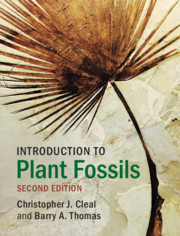
-
Select format
-
- Publisher:
- Cambridge University Press
- Publication date:
- 28 June 2019
- 27 June 2019
- ISBN:
- 9781108650021
- 9781108483445
- 9781108705028
- Dimensions:
- (246 x 189 mm)
- Weight & Pages:
- 0.74kg, 262 Pages
- Dimensions:
- (246 x 189 mm)
- Weight & Pages:
- 0.59kg, 262 Pages
You may already have access via personal or institutional login
Book description
Plant remains can preserve a critical part of history of life on Earth. While telling the fascinating evolutionary story of plants and vegetation across the last 500 million years, this book also crucially offers non-specialists a practical guide to studying, dealing with and interpreting plant fossils. It shows how various techniques can be used to reveal the secrets of plant fossils and how to identify common types, such as compressions and impressions. Incorporating the concepts of evolutionary floras, this second edition includes revised data on all main plant groups, the latest approaches to naming plant fossils using fossil-taxa and techniques such as tomography. With extensive illustrations of plant fossils and living plants, the book encourages readers to think of fossils as once-living organisms. It is written for students on introductory or intermediate courses in palaeobotany, palaeontology, plant evolutionary biology and plant science, and for amateurs interested in studying plant fossils.
Reviews
‘… affording quick access to the world of fossil plants to any interested reader. Their direct approach is refreshing, making the book eminently useful for the basic identification of fossil plants, in some cases down to species-level determinations … Undergraduate students willing to read this book will quickly gain a core understanding of an important subject that is rarely included in today's college curriculum.’
P. K. Strother Source: Choice
‘This edition is great for everyone interested in fossils, plants, and (specially) fossil plants, being especially useful for those starting to study plant evolution and paleobotany. It may also be of interest for everyone who ever found a piece of petrified wood and wanted to learn more about it, and about all of the wonderful and strange plants that inhabited the earth a long time ago.’
Andrés Elgorriaga Source: Plant Science Bulletin
Contents
Metrics
Altmetric attention score
Full text views
Full text views help Loading metrics...
Loading metrics...
* Views captured on Cambridge Core between #date#. This data will be updated every 24 hours.
Usage data cannot currently be displayed.
Accessibility standard: Unknown
Why this information is here
This section outlines the accessibility features of this content - including support for screen readers, full keyboard navigation and high-contrast display options. This may not be relevant for you.
Accessibility Information
Accessibility compliance for the PDF of this book is currently unknown and may be updated in the future.


